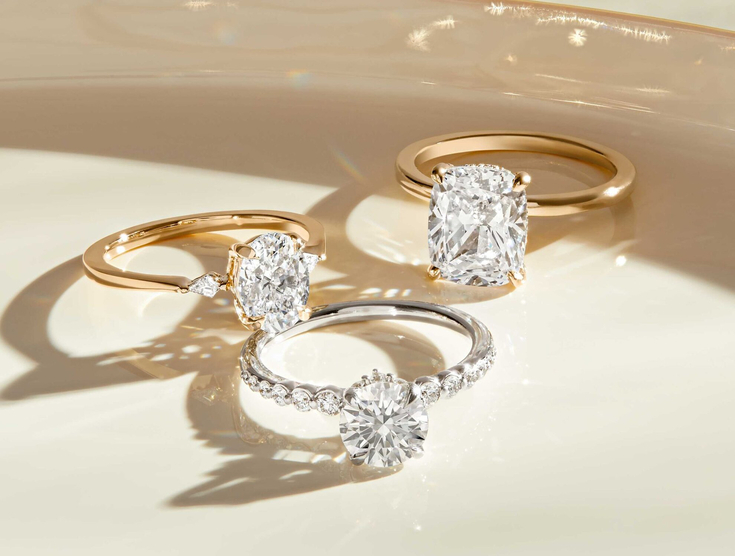Table of Contents
Introduction to Lab-Grown Diamond Rings
When it comes to choosing a ring that symbolizes love and commitment, lab-grown diamond rings have become increasingly popular. They’re not just eco-friendly alternatives to mined diamonds; they offer beautiful options in various settings. But what about the metal? platinum vs gold lab grown diamond rings are two of the most sought-after choices for settings. Let’s dive into the details of both to help you make an informed decision.
What Are Lab-Grown Diamonds?
Lab-grown diamonds are created using advanced technology that replicates the natural conditions under which diamonds form in the Earth. This means they’re chemically and physically identical to mined diamonds but are produced in a fraction of the time. They offer the same sparkle and beauty without the ethical concerns often associated with traditional diamond mining.
Why Choose Lab-Grown Diamonds?
Opting for lab-grown diamonds allows you to get more value for your money. You can typically purchase a larger or higher-quality diamond for the same price as a smaller mined diamond. Plus, they’re an eco-friendly choice, created without the environmental impact of mining.
The Allure of Platinum
Platinum is often hailed as the king of metals for fine jewelry, and for good reason. Its unique properties make it a top choice for those seeking durability and a timeless look.
Characteristics of Platinum
Platinum is a dense, malleable metal known for its silvery-white hue and natural hypoallergenic properties. It’s denser than gold, making it extremely durable and resistant to wear and tear.
Pros and Cons of Platinum Rings
Pros:
- Durability: Platinum doesn’t wear away easily, making it a great choice for everyday wear.
- Hypoallergenic: Ideal for those with sensitive skin.
- Timeless Appeal: Its classic look never goes out of style.
Cons:
- Price: Platinum tends to be more expensive than gold.
- Weight: Its density can make platinum rings feel heavier on the finger.
The Elegance of Gold
Gold has been a beloved choice for jewelry for centuries, and it continues to be a top contender for lab-grown diamond settings.
Types of Gold for Jewelry
When it comes to gold rings, you have several options. Each type has its unique properties and appearance.
Yellow Gold
This classic choice has a warm hue and is often alloyed with metals like copper and zinc. It’s a traditional favorite for engagement and wedding rings.
White Gold
White gold is made by alloying gold with metals like palladium or nickel, giving it a sleek, modern look. It’s often coated with rhodium for extra shine.
Rose Gold
Rose gold has gained popularity for its romantic hue. It’s created by adding copper to gold, giving it a warm, pinkish tint.
Pros and Cons of Gold Rings
Pros:
- Versatility: Gold can be easily shaped and styled, making it ideal for intricate designs.
- Affordability: Generally more budget-friendly compared to platinum.
- Variety: With different colors available, you can choose one that best suits your style.
Cons:
- Durability: Gold is softer than platinum and can scratch more easily.
- Maintenance: White gold may require periodic replating to maintain its luster.
Comparing Platinum and Gold for Lab-Grown Diamonds
Let’s break down how these two metals stack up when it comes to lab-grown diamond rings.
Durability and Strength
Platinum’s durability makes it a strong contender for those who lead an active lifestyle. It withstands daily wear better than gold. However, gold can still hold its own, especially in styles that are less exposed to potential scratches or damage.
Price Differences
While gold is generally more affordable, the price of platinum reflects its rarity and durability. When considering budget, it’s essential to weigh the long-term value of each metal against your immediate costs.
Aesthetic Appeal
Both metals offer unique aesthetic qualities. Platinum’s cool, silvery hue complements the brilliance of a diamond beautifully, while gold adds warmth and a classic touch. Your personal style will heavily influence which metal appeals to you more.
Care and Maintenance
Once you choose your ring, proper care will keep it looking its best.
Caring for Platinum
Platinum rings are low-maintenance, but they can still benefit from occasional cleaning with a soft cloth and mild soap. Avoid harsh chemicals to prevent dulling.
Caring for Gold
Gold requires a bit more care, especially if it’s white gold. Regular cleaning with a soft cloth and gentle soap can help maintain its shine. Replating may be necessary for white gold rings to keep them looking their best.
Choosing the Right Ring for You
Ultimately, the choice between platinum and gold for your lab-grown diamond ring boils down to personal preference and lifestyle considerations.
Lifestyle Considerations
If you’re active or work with your hands, platinum may be the better choice due to its durability. For those who prefer a lighter feel or enjoy changing their jewelry frequently, gold might be ideal.
Personal Style
Consider which metal aligns more with your personal style. Do you gravitate towards the classic elegance of gold, or do you prefer the modern, sleek look of platinum?
Budget Considerations
Don’t forget to factor in your budget. While gold is often more affordable, investing in platinum may provide long-term benefits, especially if you plan to wear the ring daily.
Conclusion
Choosing between platinum and gold lab-grown diamond rings is a personal journey, and both options have their distinct advantages. Whether you’re drawn to the timeless elegance of gold or the durability and prestige of platinum, what matters most is that your choice reflects your unique love story. With lab grown diamonds, you can enjoy beauty and quality without compromise, making your ring truly special. So, take your time, explore your options, and find the perfect ring that embodies your love and commitment!

